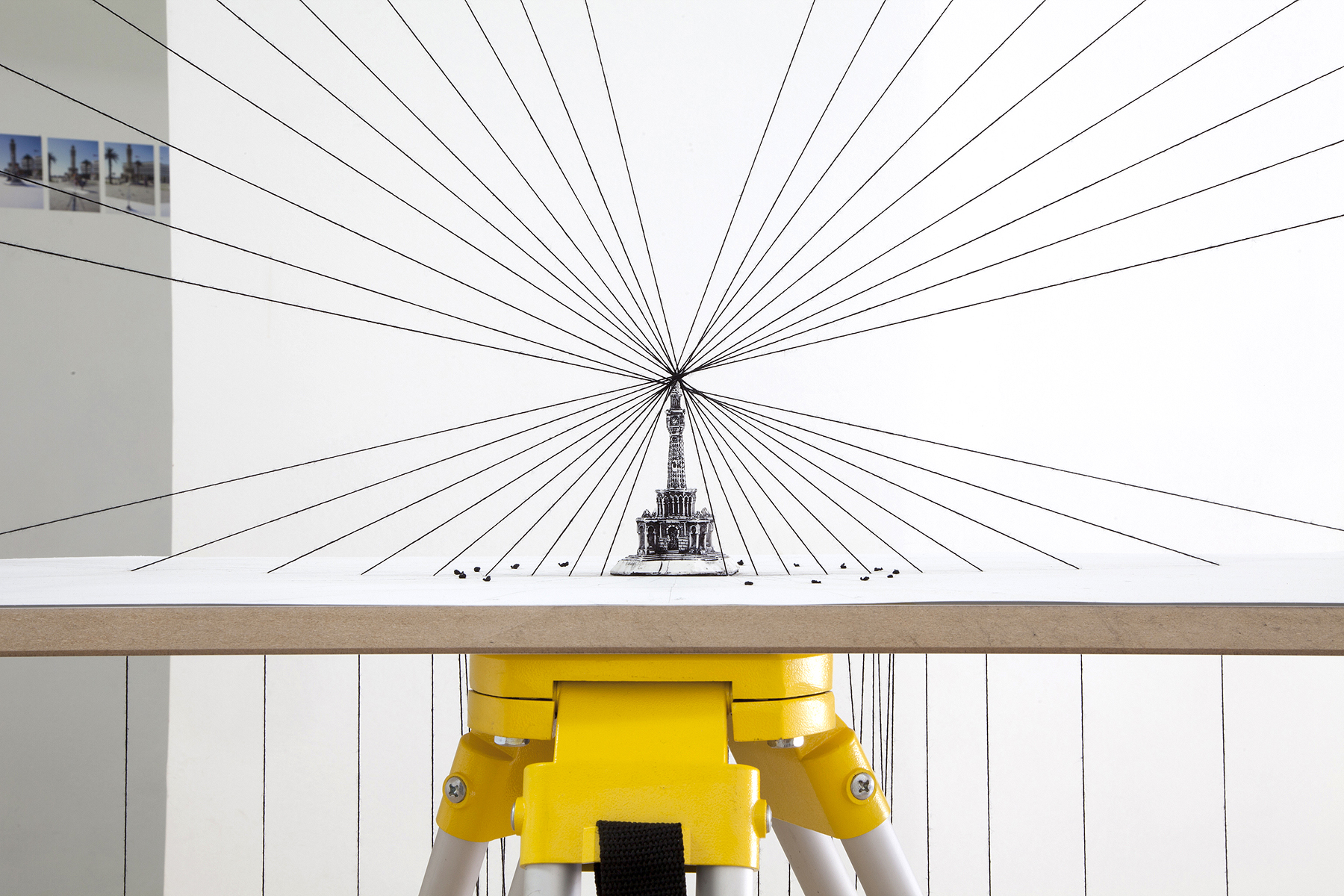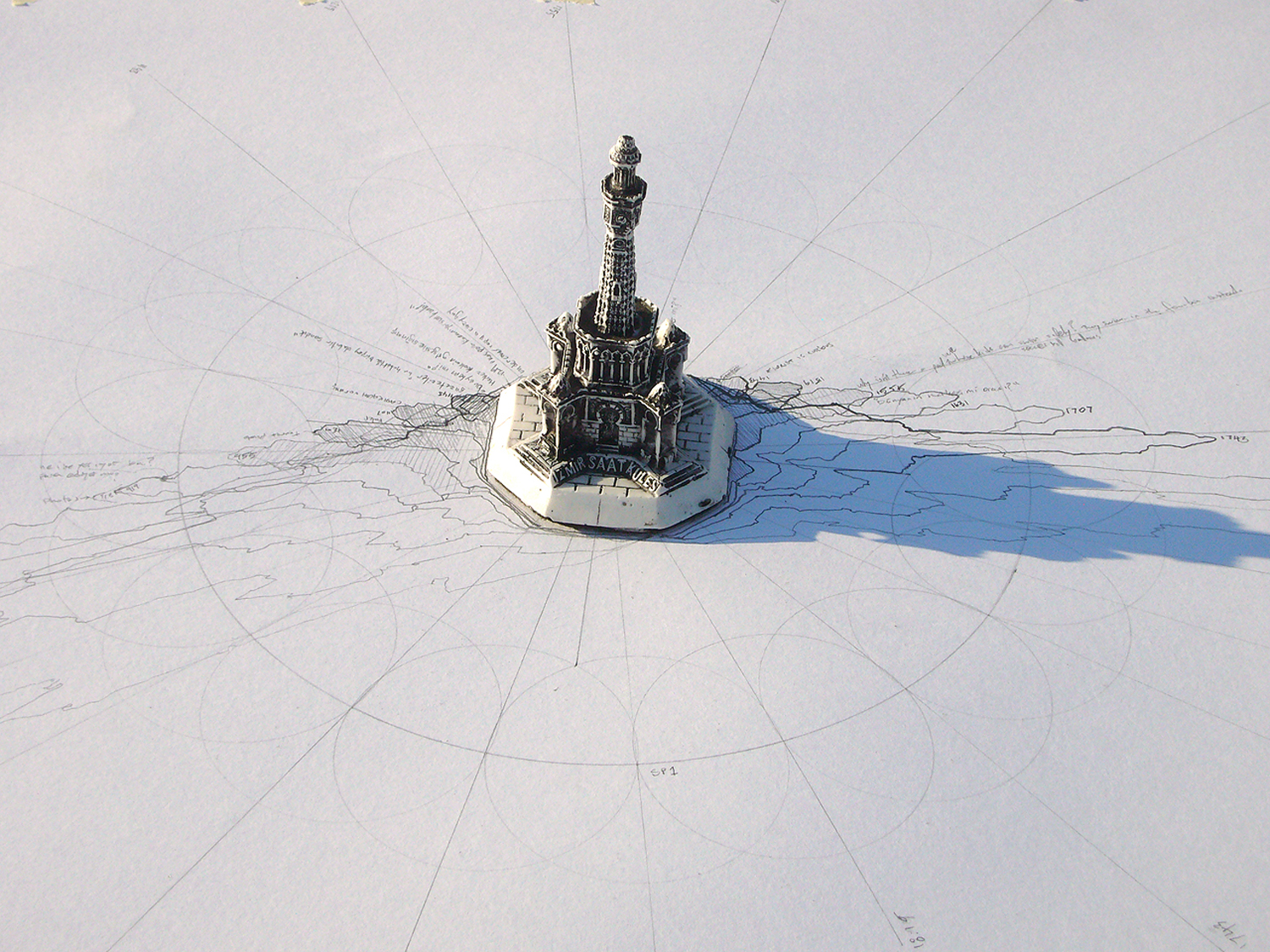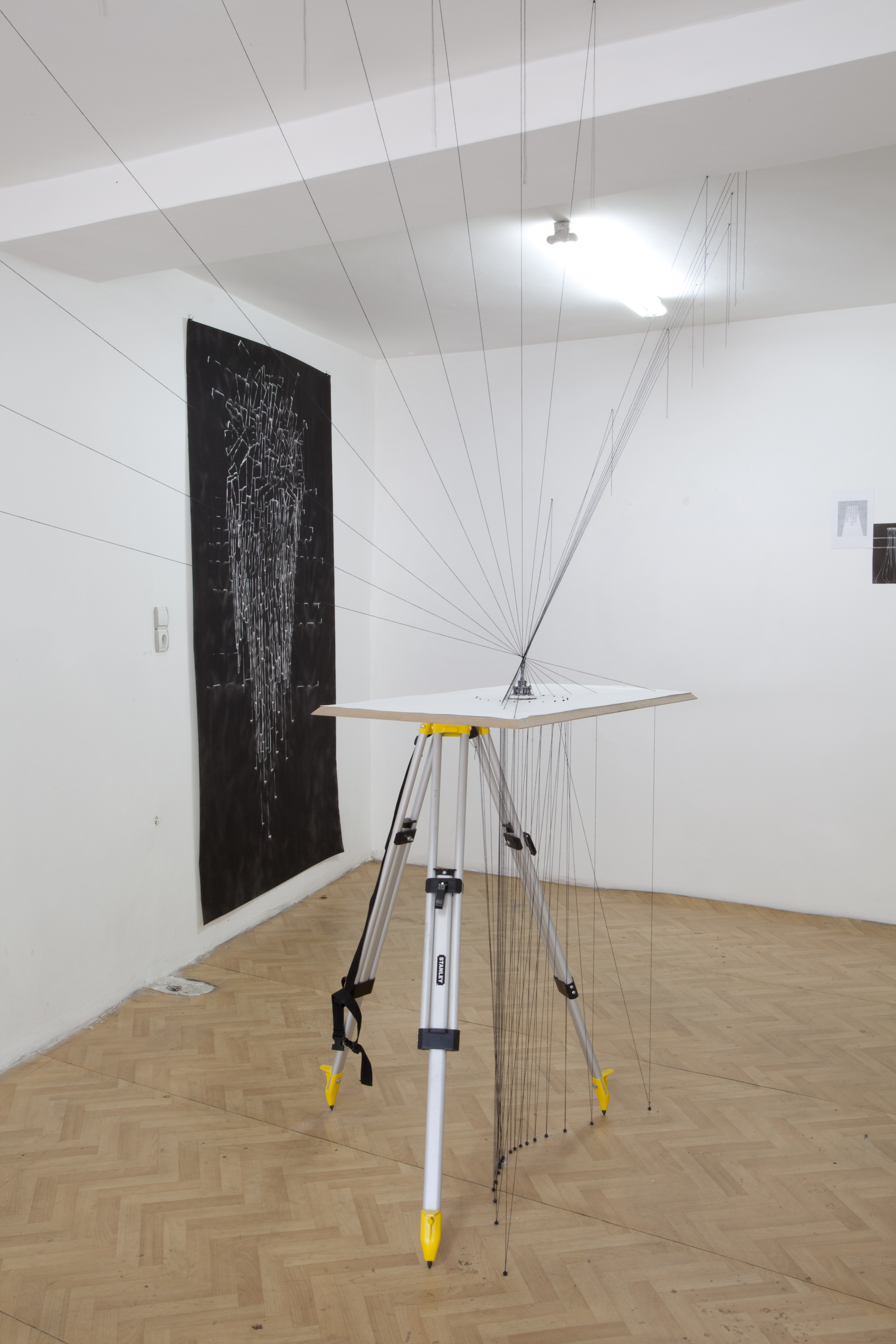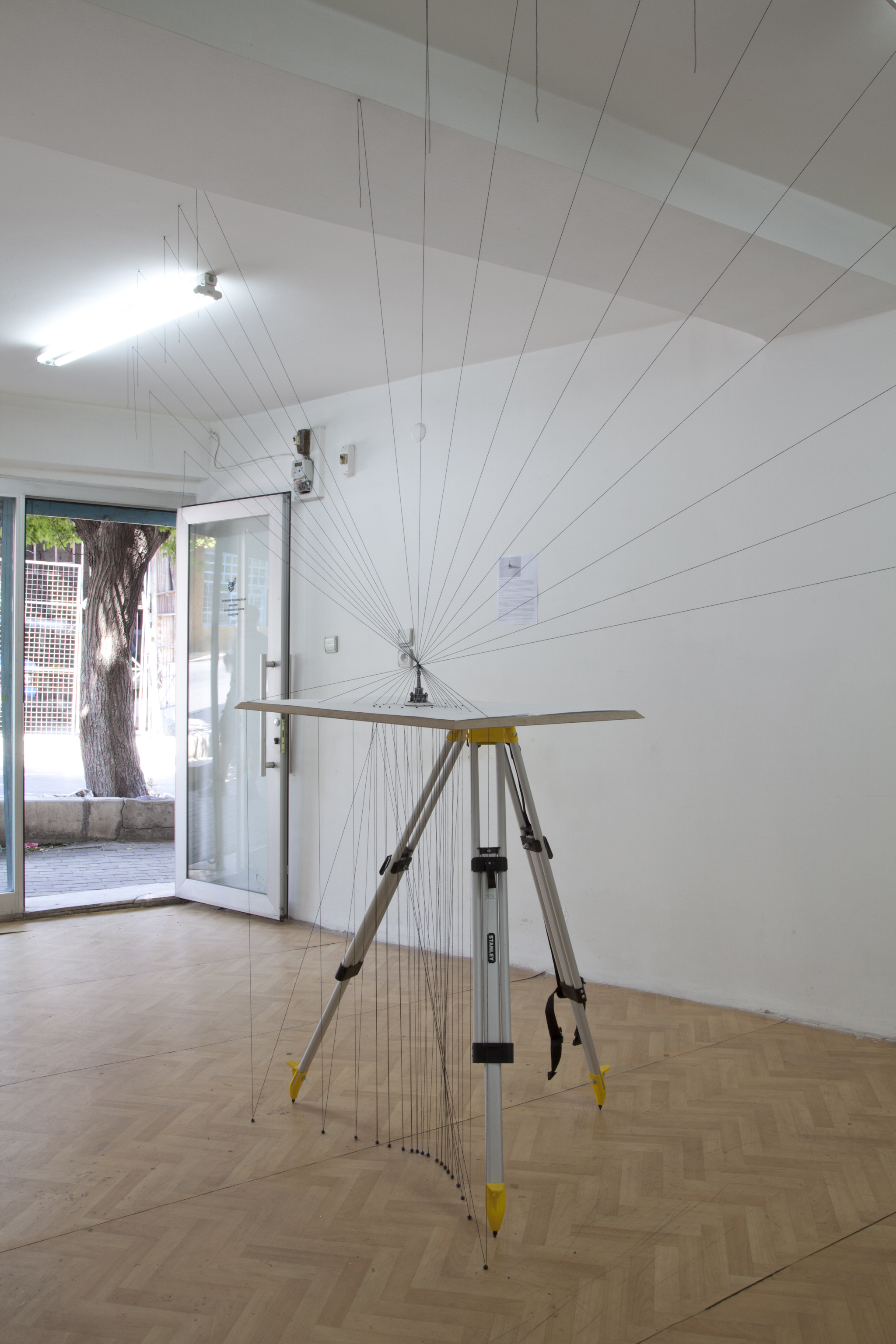
Yeryüzü+Gökyüzü
This project was a performance at the Konak Clock Tower, in Izmir, Turkey. The clock tower was designed by Raymond Charles Père, and built in 1901, as a gift from Emperor Wilhelm II to Sultan Abdülhamid II - “the modernizer”- a builder of railroads stretching to the oil fields of Mesopotamia, and autocrat who abolished the fledgling Ottoman Parliament. The trains necessitated clock-time. The tower was designed for a smaller plaza than exists today. Over the last century, the plaza was gradually widened into a pedestrianized expanse that is encircled by the headquarters for government agencies and security forces in the city.
The widening of the plaza opened up the alternative possibility of the clock tower to act as a sundial, a more archaic clock. The project utilized the 20 segments of the plaza paving as 36-minute intervals by which to record the shadow of the tower on the 21st of June, the longest day of 2013.
The performance was based on the rituals of plane table surveying, with the drawing table circumambulating the tower over the course of the day, and scaled using a miniature souvenir of the tower. It drew inspiration from the “Standing Man” protests taking place at the same time, as part of the larger Gezi Park protests throughout Turkey. The drawing recorded not only the shadow of the tower, but also conversations with undercover cops, journalists, curious passerby, and fortune-tellers in the plaza, over the course of the day.
The satellite tower and its drawing were later used in an installation to re-project the path of the sun across the sky, at 49A, an independent art space in İzmir. Projecting from the data recorded in the drawing, the installation wove together the rotation (on the axis of the Earth) and the revolution (around the Clock Tower).






